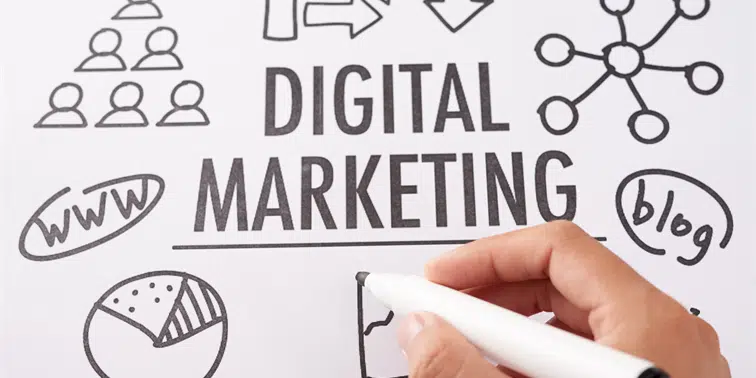A lead is a person who has indicated interest in your company’s product or service in some way, shape, or form. As a lead, you’d hear from a business or organisation with which you’ve already opened communication from, instead of getting a random cold call from someone who purchased your contact information.
The lead generation process starts with a visitor discovering your business through one of your marketing channels, such as your website, blog, Ad or social media page.
That visitor then clicks on your call-to-action (CTA) taking them through to a landing page on your website that’s designed to capture lead information in exchange for an offer.
What’s key to your lead generation marketing is the different channels that you can utilise to help start the lead generation process. Remember the information you provide is about providing your target audience – your ideal customers – with helpful tips, insight, a course or a template that will help with their business. Here’s an overview of what inbound marketing includes to help with lead generation.
Content Marketing
Content is a great way to guide users to a landing page. Typically, you create content to offer visitors useful, free information. You can include CTAs anywhere in your content. At the bottom of a post, in the hero image, or even on the side panel. The more interested a visitor is with your content, the more likely they are to click your CTA and move onto your landing page with specific instructions to ‘download an ebook’; ‘book a course’; ‘sign up to a newsletter’.
Blog
The great thing about using your blog posts to promote an offer is that you can tailor the entire piece to the end goal. So, if your offer is an instructional video on setting up Zoom video conferencing, then you can write a blog post to accompany that with background as to the benefits and step by step points.
Social Media Marketing
Social media platforms make it easy to guide your followers to take action, from the swipe up option on Instagram stories to Facebook bio links. You can also promote your offerings on your social posts and include a call to-action in your caption.
Email marketing
Email is a great place to reach the people who already know your brand and product or service. It’s much easier to ask them to take an action since they’ve previously subscribed to your list. Emails tend to be a bit cluttered, so use CTAs that have compelling copy.
Ads and Remarketing
The sole purpose of a Pay Per Click (PPC) ad such as Google Adwords is to get people to take action. Otherwise, why spend the money? If you want people to convert, be sure that your landing page and offer match exactly what is promised in the ad, and that the action you want users to take is clear. Read more about the benefits of PPC.
Creating a marketing plan can help you run a coordinated campaign. Our Beginner’s Guide to Inbound Marketing has loads more details for effective lead generation, download our free ebook.
Read more about inbound marketing strategy for your business.



